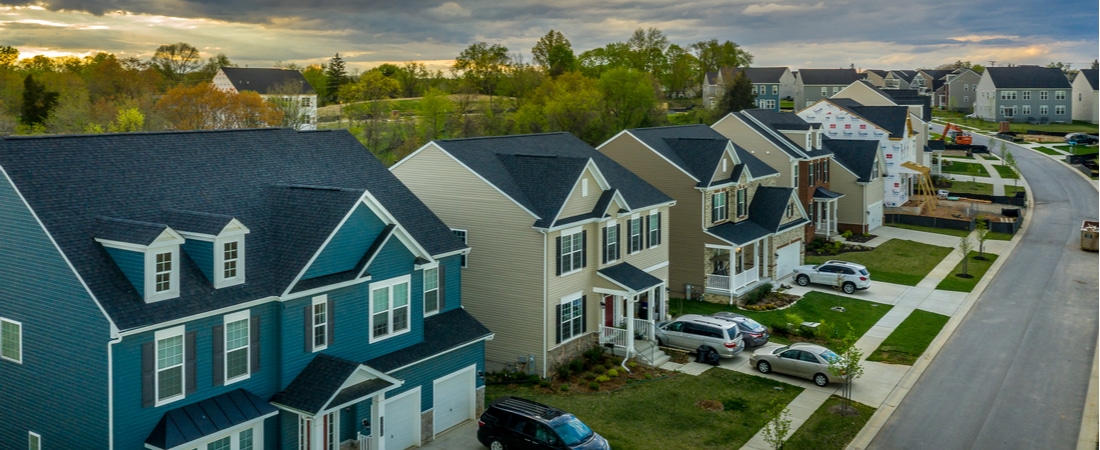Real estate market recap for 2020 and housing outlook for 2021. An overview of how COVID-19 impacted real estate in 2020 and what to expect in 2021.
Safe to say that 2020 will go down in history as a year like no other. Even, or perhaps especially, in real estate.
Real Estate Market Recap for 2020
COVID-19 lockdowns hit mid-March, and by the beginning of April, we heard whispers about a dramatic change in attitude from home buyers. Agents and brokers across the country reported that buyers were fleeing big city centers, looking to escape crowded living spaces, shared elevators, shuttered restaurants and the cultural institutions they had enjoyed and supported for decades.
Where were they moving? Anywhere they could get more space: suburbs and even rural America (but only if there was great WiFi). The more green space the better. Those who could work from home and were now helping their children go to school at home, wanted more space for themselves and their families.
City condos went on the market. Suburban houses started selling like hotcakes. Condos took longer to sell and list prices started dropping (a little in some areas, more in others) while suburban home prices soared. (Rent prices in markets like San Francisco and New York dropped as well, with landlords offering dramatic monthly rent reductions with free months of rent, a trend that continues.)
But, Covid hasn’t caused a real estate housing crisis the way the Great Recession caused millions of suddenly unemployed homeowners to burn through their cash as they fought, and ultimately fell into, foreclosure.
The CARES Act
The CARES Act was passed. A remarkable piece of legislation, it required lenders to allow homeowners with federally-backed mortgages (by Fannie Mae, Freddie Mac, FHA, VA and USDA) to opt into no-fault forbearance. Just for asking, you could stop making your mortgage payment without leaving a seriously negative, long-lasting imprint on your credit history (or tanking your credit score). Forbearance would last as long as 12 months, and then you’d have three ways to come out of it: The missing payments would be tacked onto the end of your mortgage, you’d just pay the missing amount in a lump sum (or a catch-up plan would be enacted) or the loan would be modified to an amount you could afford to pay. It was eminently reasonable and without precedence.
(At the same time, the CARES Act put almost all federal student loans into forbearance, which took pressure off of those facing monthly mortgage and student loan payments. As a result, a significant portion of those in mortgage forbearance continued making their monthly payments anyway.)
Mortgage Forbearance and Housing Prices
At the height of the pandemic, roughly 9 percent of homeowners opted into mortgage forbearance. Today, around 5 percent of homeowners are still in its protective shell according to the Mortgage Bankers Association. Average credit scores reached a new high in 2020, and mortgage interest rates hit new loans more than a dozen times. (How low? The mortgage interest rate on an adjustable loan we have was just reduced to 2.785 percent for 2021.)
Those Americans who held onto their jobs, or got them back fairly quickly, deleveraged their debt. When solid credit scores and the lowest interest rates in history met the need to escape for literally greener pastures, demand for housing soared and prices skyrocketed.
(Let’s not forget that another complicating issue in the Great Recession was that housing prices were in a bubble, so when the housing crisis hit, many homeowners were underwater with their mortgages. Rising prices over the past half a dozen years means many homeowners now enjoy a significant amount of equity. Lack of housing stock today means homeowners who are in serious trouble can simply sell their homes and walk away with cash in their pocket.)
Landlords and Commercial Real Estate
No, the only housing crisis COVID-19 may cause is one for mom-and-pop landlords, who rent to those employed in the retail, hospitality, or entertainment industries. Some of these tenants owe billions of dollars in unpaid rent and have been protected thus far by eviction moratoriums. What happens when those end?
There may well be a commercial real estate crisis brewing as well, as companies that now see their employees can work from home effectively have begun the process of deleveraging or reducing office space. Every dollar not paid in rent drops to the bottom line. Walking around downtown Chicago, we’ve seen the empty office towers and wondered who will be required to go back to work in crowded towers. Stories of much emptier city centers are playing out around the globe.
Housing Outlook for 2021
Whatever happens with commercial real estate in the next few years, home buyers and sellers should be safe. According to Realtor.com’s December Housing Report, we started 2021 with the lowest amount of existing housing inventory (homes available for sale) ever, coming in below 700,000 homes for sale, a drop of nearly 40 percent year over year.
So here’s where we are: Home prices will keep going up in 2021. Mortgage interest rates are at rock bottom. Credit scores are the highest on record. Affordability will be a challenge, especially for first-time buyers. Homebuyers beware: It’s going to be hard to find what you want at a price you can afford this year, especially if you’re looking for green space.
More on Topics Related to Real Estate Market Recap for 2020 and Housing Outlook for 2021
Is the Housing Market Going to Crash in 2021?
Real Estate Market 2021: Where Homes Are Selling Fast
Top 5 Bathroom Trends for 2021
Buying a House During the COVID-19 Pandemic
Managing Your Personal Finances During COVID-19







Leave A Comment